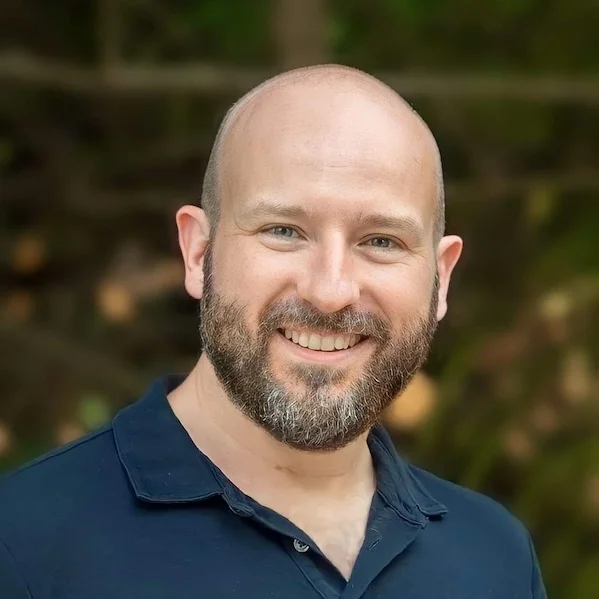The governance meeting process is designed to make structural changes to the organization, e.g. changing the roles, circles, and policies. Traditionally, this type of decisions is made exclusively by managers. With Holacracy’s governance meeting process, they happen within each team (or circle) and involve every member of that team.
Governance meetings occur at a regular rhythm based on the needs of the circle (e.g. monthly) and are scheduled by the circle’s Secretary. They follow a structured process and are held by the circle’s Facilitator.
Note: The governance process is part of Holacracy v5 Article 5. While governance changes are typically proposed in governance meetings, it is also possible to use the governance process asynchronously without meeting.
Process
This process is specifically for Holacracy v5. It is slightly different in Holacracy v4.1, but its core mechanisms are the same.
Call out distractions, get present for the meeting. One person speaks at a time, without discussion.
This step starts with building an agenda of tensions to process — one or two words per item, no discussion. If needed, the circle’s Secretary captures agenda items. Any participant can also add items to the agenda later.
3. Processing the Agenda: the Facilitator processes each agenda item using the “Integrative Decision Making” process below.
The owner of the agenda item becomes the “Proposer.” It is their space to describe the tension and make a proposal to resolve it. Only the proposer speaks.
Alternatively, the proposer can request some discussion in order to get to a proposal. However, this is not a discussion to reach a consensus around the issue; it’s only a discussion to help the proposer come up with a proposal to address the tension as they sense it.
Note: to be considered valid, a proposal only needs to 1) address a tension sensed by the proposer 2) for at least one of their role in the circle. There is no requirement for the proposal to be well crafted, carefully thought-through, etc. See the exact criteria in the Holacracy constitution article 5.3.1.
Anyone can ask questions to better understand the proposal. The proposer can answer but has no burden of answer — if they don’t have an answer, they can simply say so (“I don’t know,” “not specified”).
The Facilitator lets anyone ask questions in no particular order. Anyone can ask as many questions as they need. However it’s not a space for back and forth discussion. Rather, the pace should be of one answer for one question; pause; then next question.
It’s NOT allowed to use clarifying questions to give an opinion about the proposal. Opinions, suggestions, reactions, all should be left for the Reaction round coming next. The Facilitator will cut off any question that’s conveying an opinion or isn’t intended to better understand the proposal. There is no hard line between a clarifying question and a reaction, and it’s at the Facilitator’s discretion to discern between the two.
One at a time, each person reacts to the proposal as they see fit. No response or interruption is allowed during someone’s reaction. Any type of reaction is welcome, from intellectual critiques to emotional outbursts. The only caveat is that reactions should not be engaging someone in particular. Everyone reacts except the proposer.
Reactions are the only step of the governance meeting when people can speak freely. It’s a perfect phase for providing different perspectives and suggesting improvements to the proposal, so that the proposer can integrate those changes if they like them.
After all reactions are complete, the proposer can optionally clarify the intent of the proposal, or amend it based on the reactions. Only the proposer speaks; no discussion allowed.
Although the proposer can modify the proposal however they want, the goal is for the proposer to amend it only if they found a better way to address their tension. It’s not the proposer’s job to address all the concerns and reactions they heard during the reaction round, or even to make improvements that were suggested by other participants.
One at a time, the Facilitator asks each participant if they see “any reason why adopting this proposal would cause harm or move the circle backward” (i.e. the definition of an Objection). The proposer also gets the opportunity to raise an objection. Objections are stated, tested*, and captured without discussion. One person may have several objections, and everyone’s objections must be captured before we move to the next step.
* The Facilitator may “test” objections at their discretion. Testing objections means asking questions to the objector to reveal whether the objection means the criteria of a valid objection defined in the Holacracy constitution (article 5.3.2).
If there is no objection, the proposal is adopted and the Facilitator moves to the next agenda item.
If one or several objections were raised, the Facilitator moves to the Integration step.
The goal is to amend the proposal so that it would not cause the objection, and would still address the proposer’s original tension.
Objections are integrated one at a time. For each objection, the Facilitator facilitates a discussion to help integrate the objection. Mostly the objector and the proposer speak, but others can help as well. The discussion stops as soon as the objector and the proposer have both agreed that an amended proposal would not cause an objection while still addressing the proposer’s tension.
Once all objections are integrated, go back to an Objection round to ensure there is no new objection.
Once a proposal raises no objection, it is accepted! And the Facilitator moves to the next agenda item.
The Facilitator calls on every meeting participant. Each person can share a closing reflection about the meeting. No discussion. Done!
![[ENGLISH] Governance Meeting Card v5.0.100724 [english] Governance Meeting Card V5.0.100724](https://www.holacracy.org/wp-content/uploads/2023/03/ENGLISH-Governance-Meeting-Card-v5.0.100724.webp)


